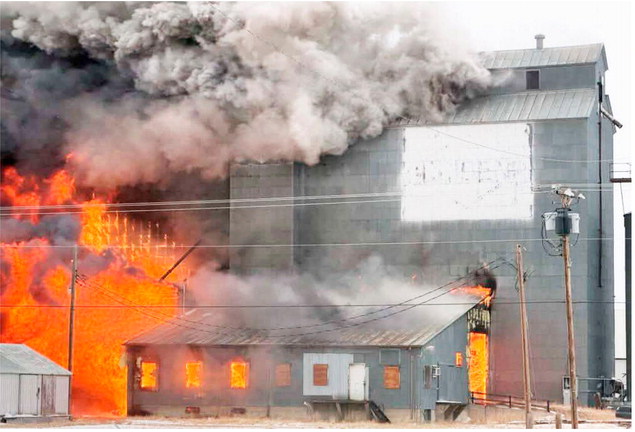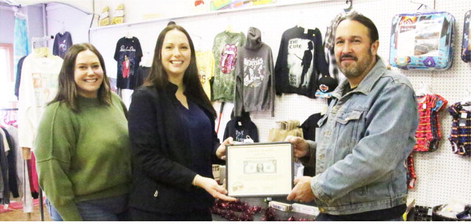Audit Dings Commerce Department’s Tracking Of Tourism Grant Impacts
The Montana Department of Commerce spends millions in bed tax revenues each year to promote the state as a tourism destination for out-ofstate visitors and to support tourism-related infrastructure in Montana. A legislative audit of the department’s 2017 fiscal year presented last week sought, in part, to determine how eectively that money is spent.
The department’s poor record-keeping practices regarding about $950,000 in tourism-promotion grants awarded to local governments and nonprofits, plus a lack of impact-evaluation standards, make it hard to tell, state auditors told lawmakers at a Legislative Audit Committee meeting Oct. 30.
The department’s poor record- keeping related to tourism- promotion grants makes it hard to tell, state auditors told lawmakers at a Legislative Audit Committee meeting Oct. 30.
The audit, presented by legislative auditor Will Soller and co-authored by Joe Murray, found that grants awarded in fiscal year 2017 “identified a lack of consistent support regarding how the department reviewed and awarded tourism grants, including how the results of those grants are evaluated.”
The auditors added: “While the department has wide discretion in how it spends bed tax dollars in support of promoting tourism, it is critical these limited funds be invested in a way which spurs additional visitation.”
Commerce director Tara Rice told lawmakers the department has already improved its granting process as a result of the audit’s recommendations, which had been made available to department sta prior to the hearing. While visitor numbers have been flat in recent years, she said, visitor spending in Montana is trending up.
Regardless, Legislative Audit Committee chair Sen. Dee Brown, R-Hungry Horse, said the findings give her concern about whether there’s adequate accountability for how the state spends money to promote tourism.
“The only consistency in this audit is that the department of commerce is inconsistent,” she said.
Measuring Impact
In 2018, Montana received 12.4 million out-of-state visitors, who injected $3.7 billion in travel-related expenditures into the state economy, according to research by the University of Montana Institute for Tourism & Recreation Research.
The commerce department’s tourism promotion eorts are partially funded by a portion of Montana’s 7% tax on lodging revenues. According to the audit, the commerce department received nearly $17 million in 2017 to spend on marketing eorts, tourism grants, and promotion of the state as a filmmaking location.
About $950,000 of that was spent on tourism grants, including $40,000 for renovations to the Range Riders Museum in Miles City, $67,605 for facade upgrades at Missoula’s Roxy Theater, and $3,766 to help the Montana Dude Ranchers’ Association redesign its website.
Noting that tourism promotion programs in Utah and other states have clearly defined grantmaking procedures, auditors say they weren’t able to determine the logic by which Montana commerce o_cials decided which applications to support with public money. A total of 78 nonprofits and local government entities sought tourism grants in 2017, with 33 receiving awards.
“While department sta maintain grants are awarded based on established criteria in policy, department sta were unable to provide documentation supporting this,” auditors wrote.
Auditors also faulted the commerce department for a lack of clear grant-reporting standards, meaning many post-project reports submitted by grantees include insuffi cient information to assess whether the project had a measurable eect on tourism.
“Final reports are commonly used in press releases to anecdotally highlight the success of the grant program,” auditors wrote. “The final reports are not used by the department as benchmarks for future grant applications or to measure the impact of these public funds.”
Measuring grant impact in a one-year time frame can be challenging, Rice told the audit committee. For example, she said, a grant to help a small eastern Montana town build a new rodeo grandstand might not generate attendance gains in a single year if the town happens to face a rainy event season. Additionally, she said, the department has to strike a balance between evaluating grant impact and overloading grant recipients with burdensome paperwork.
“We have to be realistic about what they can produce,” Rice said.
No Fault With Contract
The audit did clear the commerce department’s conduct in a 2016 hiring process, in which it was accused of nepotism after awarding the state’s flagship tourism-marketing contract to an out-ofstate firm that employed a cousin of a commerce o_cial. That contract, now worth more than $12 million a year, went to the Wisconsin-based firm Homan York.
The prior contract holder, Bozeman-based MercuryCSC, had been Montana’s tourism marketing firm of record for a decade, and developed the state’s “Get Lost” promotional campaign. After losing the contract, MercuryCSC laid o six employees and, in 2018, was sold to a New York-based firm, according to the Bozeman Chronicle.
At the time, the contract decision received substantial media coverage and criticism from tourism industry leaders and lawmakers, who worried that an out-of-state company wouldn’t understand Montana as well as an instate firm. Critics also raised nepotism concerns about a commerce department staer involved in the contracting process, current division administrator Jennifer Pelej, whose cousin is employed by Homan York.
Auditors say the department took appropriate steps to mitigate the potential conflict of interest, which was disclosed during the contracting process. The situation was reviewed by the state Department of Administration, which concluded that the conflict was minor, since Pelej’s relative wasn’t directly involved in the firm’s proposal. A staer from the DOA State Procurement Bureau was added to the contract review team as an independent check, and auditors concluded that the rationale for scores awarded to proposals was appropriately documented.
“From our perspective, the department mitigated any perceived conflict of interest,” auditor Will Soller said at the Oct. 30 meeting.
Even so, auditors note that Homan York has at times struggled to keep the state satisfied with its performance, with the company placed on probationary status following a 2018 performance review by commerce o_cials. Among the concerns expressed was the company’s “struggle to use the established Montana brand.”
“If contract issues continue, the department may need to consider reissuing the contract in the future,” auditors wrote.
“As with any contract, it’s important to have candid and open conversations about the work performed,” Rice told legislators. “Since hiring the contractor in 2016, we’ve done just that.”
Brown said lawmakers will consider bed-tax dollars for other uses if the commerce department doesn’t do a better job of justifying how the money is spent.
“We better use these monies wisely, or they’re going to be directed someplace by appropriations,” she said.
( Publisher’s Note: Eric Dietrich is a journalist and data designer based in Helena. He is the lead reporter on the Long Streets Project and also covers state policy for MTFP. He has previously worked for the Great Falls Tribune, Bozeman Daily Chronicle and Solutions Journalism Network. Contact him at edietrich@mtfp.org or 406-544-1074.)

